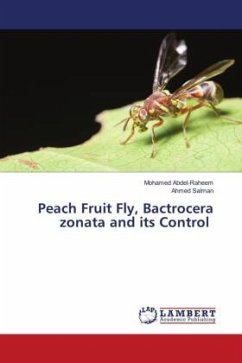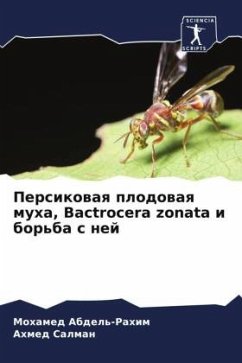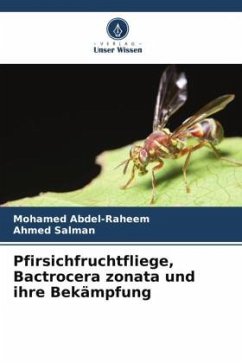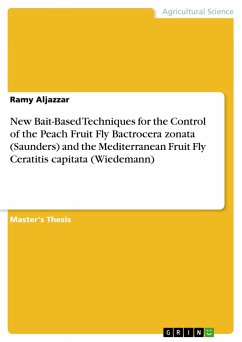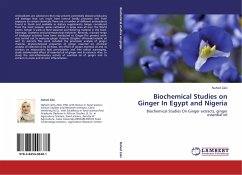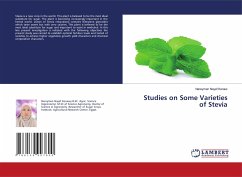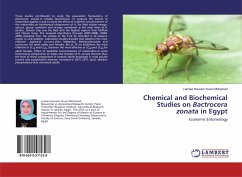
Chemical and Biochemical Studies on Bactrocera zonata in Egypt
Economic Entomology
Versandkostenfrei!
Versandfertig in 6-10 Tagen
27,99 €
inkl. MwSt.

PAYBACK Punkte
14 °P sammeln!
These studies contributed to study the population fluctuations of Bactrocera zonata in Ismailia Governorate, to evaluate the toxicity of insecticides against it and to study the effect of sublethal concentrations of the insecticides on biochemical components of it. For field studies mango, apricot, guava, mandarin and orange considered as the main hosts of B. zonata, Jackson trap was the best with the highest capture than McPhail and Steiner traps. The seasonal abundance through (2007-2008), (2008-2009) indicated that, the activity of the fruit fly recorded in all seasons, except in cold weath...
These studies contributed to study the population fluctuations of Bactrocera zonata in Ismailia Governorate, to evaluate the toxicity of insecticides against it and to study the effect of sublethal concentrations of the insecticides on biochemical components of it. For field studies mango, apricot, guava, mandarin and orange considered as the main hosts of B. zonata, Jackson trap was the best with the highest capture than McPhail and Steiner traps. The seasonal abundance through (2007-2008), (2008-2009) indicated that, the activity of the fruit fly recorded in all seasons, except in cold weather. Laboratory studies showed that Diazinon the most effective against B. zonata then Malathion, Methoxyfenozide and Lufenuron for adult males and females. But at 72 hrs Malathion the most effective at LC10 and LC25, Diazinon the most effective at LC50 and LC90 for adult females. Effect of sublethal concentrations of insecticides on some biochemical components of males and females of B. zonata showed that, the level of these components in treated adults decreased in total soluble protein and acetylcholine esterase, increased in (GOT, GPT), (acid, alkaline) phosphatases than untreated adults.



